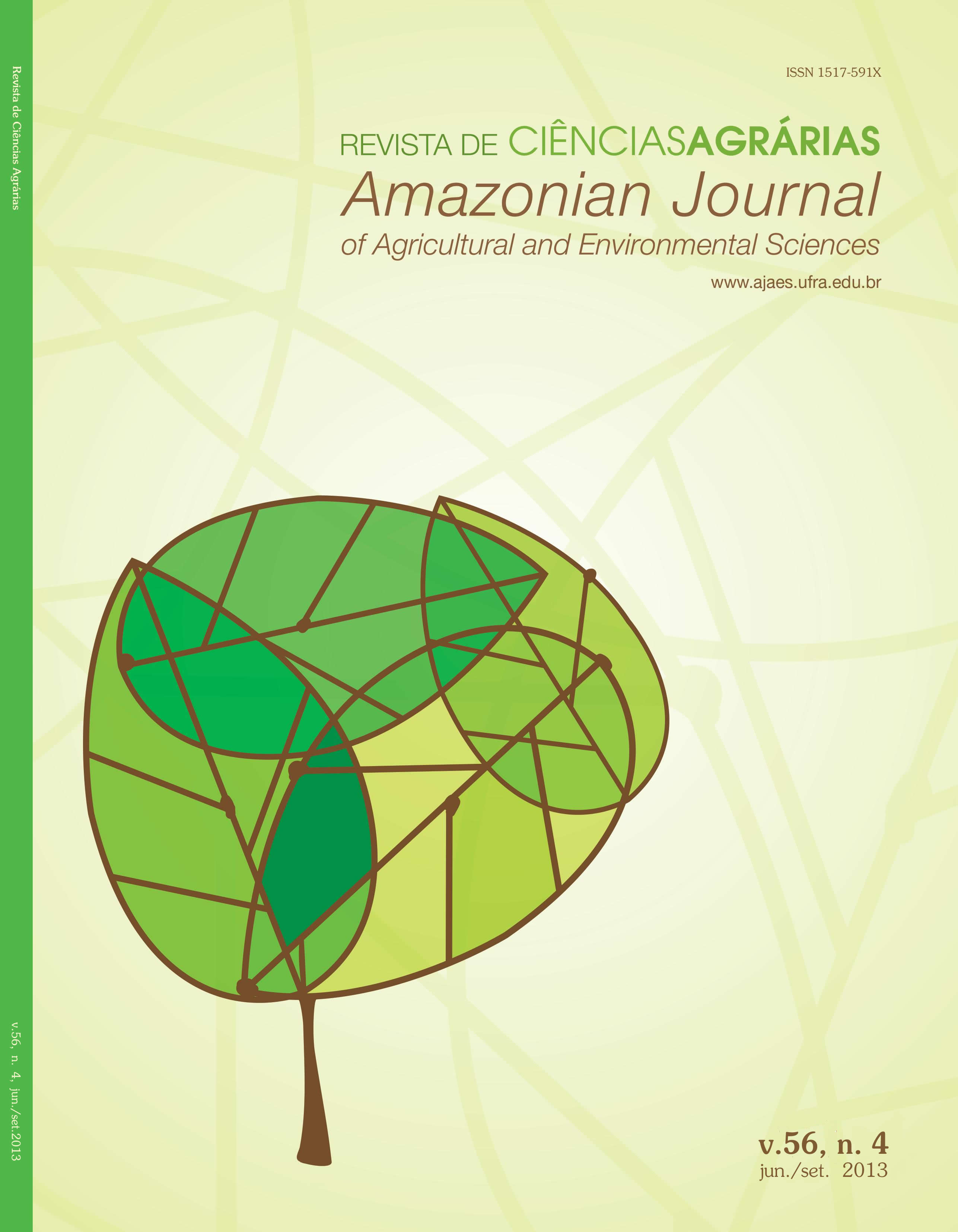Explant type and different concentrations of salts in MS medium in vitro establishment of Aniba canelilla
Abstract
The peel - precious ( Aniba canelilla ) is a plant species native to the Amazon region , with economic potential in silvicultural terms , the production of perfumes and cosmetics . However , one limitation to the domestication of the species is the absence of propagation methods . The objective of this study was to evaluate the effect of explant type and different salt concentrations of MS medium in their establishment in vitro . Shoot tips ( 1.5 cm ) and nodal segments were used with two gems, isolated from bark - precious seedlings maintained in the greenhouse . The treatments consisted of two types of explants and six concentrations of salts in MS medium plus 15 or 30 g L- 1 sucrose and disinfectants . It was found that the nodal segment is less sensitive to treatments performed disinfestation and decontamination showed higher successful in survival and in vitro establishment of shell - precious.
Downloads
References
ERIG, A. C.; SCHUCH, M. W. Estabelecimento in vitro de mirtilo a partir de segmentos nodais. Scientia Agraria, v. 6, n. 1-2, p. 91-96, 2005.
FERRARI, M. P.; GROSSI, F.; WENDLING, I. Propagação vegetativa de espécies florestais. Curitiba: Embrapa Centro Nacional de Pesquisas Florestas, 2004. 22p.
FERREIRA, M. G. R.; SANTOS, M. R. A.; BRAGADO, A. C. R. Propagação in vitro de cupuaçuzeiro: desinfestação de explantes florais. Saber Científico, v. 2, n. 2, p. 37-44, 2009.
GOLLE, D. P.; REINIGER, L. R. S.; CURTI, A. R.; BEVILACQUA, C. B. Melhoramento florestal: ênfase na aplicação da biotecnologia. Ciência Rural, v. 39, n. 5, p. 1606-1613, 2009.
LOPES, K. P.; CARVALHO, J. M. F. C.; ALMEIDA, F. A. C.; ROCHA, M. Regeneraçao de gemas de algodoneiro (Gossypium hirsutum L.) cv. BRS 2001. Revista Brasileira de Oleaginosas e Fibrosas, v. 8, n. 1, p. 771-778, 2004.
MITRA, S. K. Important Myrtaceae Fruit Crops. Acta Horticulturae, v. 849, n. 6, p. 33-38, 2010.
SAMPAIO, P. T. B. Preciosa Aniba canelilla. In. CLAY, J. W.; SAMPAIO, P. T. B; CLEMENT, C. (Eds.). Biodiversidade Amazônica: Exemplos e estratégias de utilização. 1. ed. Manaus: Instituto Nacional de Pesquisas da Amazônia, 2000. p. 298-305.
SILVA, A. L. L.; FRANCO, E. T. H.; BISOGNIN, D. A.; DORNELLES, E. B.; WALTER, J. M. Efeitos do nitrato de amônia na multiplicação e regeneração de gemas laterais de Dyckia maritima Baker - Bromeliaceae. Revista Brasileira de Agrociência, v. 11, n. 3, p. 369-371, 2005.
TEIXEIRA, J. B. Limitações ao processo de cultivo in vitro de espécies lenhosas. Brasília: Embrapa-Recursos Genéticos e Biotecnologia, 2001. Disponível em: <http://www.redbio.org>. Acesso em: 26 nov. 2011.
Authors retain copyright and grant the Journal the right to the first publication. Authors are encouraged to and may self-archive a created version of their article in their institutional repository, or as a book chapter, as long as acknowledgement is given to the original source of publication. As the Journal provides open access to its publications, articles may not be used for commercial purposes. The contents published are the sole and exclusive responsibility of their authors; however, the publishers can make textual adjustments, adaptation to publishing standards and adjustments of spelling and grammar, to maintain the standard patterns of the language and the journal. Failure to comply with this commitment will submit the offenders to sanctions and penalties under the Brazilian legislation (Law of Copyright Protection; nº 9,610; 19 February 1998).


.jpg)









